<% ns_puts [mkm_getnavbar] %>
Advanced Tennis
The Myth of the Wrist: The Modern Pro Forehand
by John Yandell
|
We’ve heard it a million times during TV matches,
“With a flick of the wrist, he rifled another winner up the line!”
It’s a favorite phrase of many commentators, including the great John
McEnroe. It’s also common in tennis teaching. Recently I heard a
teaching pro bellow at a beginning student: “Snap your wrist! 70% of
your power is in your wrist!”
It may be widely believed and widely taught, but does
that make it true? Is the wrist snap the key to producing power in tennis?
The answer is no. In fact, with a few limited exceptions, the wrist plays
no role in the bio-mechanics of the strokes. “The flick of the wrist”
is a myth, a myth that is at the root of many technical problems for
players at all levels.
If the wrist is a myth, doesn’t that also go
against what we see with our own eyes when we watch the pros? It seems
obvious that many top players release their wrists on most if not every
stroke.
How Entrenched is the Myth of the Wrist?Read what a leading text book for teaching pros
has to say:
“When the wrist is used to generate racket head velocity through the stroke, a ‘coupling’ effect is produced, which accentuates power. When these forces work laterally, tremendous pace can be developed.” |
But the question to ask is when does this wrist
release occur, and what role, if any, does it play in the active
bio-mechanics of the stroke? In this article we will examine the myth of
the wrist in the modern pro forehand, using Andre Agassi and Tommy Haas
examples. In subsequent articles, we’ll examine the myth of the wrist in
other strokes as well.
|
Agassi’s grip is a moderate semi-western with most of his hand behind the racket handle and part of his hand underneath.
Haas’s grip is an extreme semi-western, verging on a full western, with less of his hand behind the handle, and more of his hand underneath.
To the naked eye, both players may appear to use considerable wrist, but this perception is due to the limits of human vision. The naked eye cannot register an event that takes place in 4 milliseconds--the length of time it takes for a tennis racket to strike a tennis ball. What the racket, hitting arm, and wrist are doing at the contact are, literally, invisible to the human eye.
|
Like the human eye, TV replays are also of limited value in studying strokes because television cameras also lack the optical capacity to register high speed events. Most TV cameras film at only 30 frames a second and blur the images in replay due to their slow shutter speeds.
For the past 4 years, researchers from the Advanced Tennis Research Project (www.AdvancedTennis.com) have been filming the world’s best players using new generation high speed digital cameras, similar to the “Mac Cams” used by network TV to replay line calls at the U.S. Open. These cameras, which film at 250 frames/second with high speed shutters, are allowing us to investigate the bio-mechanics of live pro match play in ways that were previously impossible.
|
|
The following analysis of the role of the wrist in the modern forehand is based on this revolutionary digital footage that allows us to “see” the hit --as well as the critical frames just before and just after.
|
Advanced Tennis filming reveals that there is no wrist snap involved in pro forehands, even with players such as Agassi and Haas. Rather than flick the wrist, pro players hit their forehands with the palm of the hand.
To do this, they establish a set hitting arm position as they start the forward swing to the ball. This position remains unchanged until long after the ball is off the strings.
|
Go to page 2
|
Your comments are welcome. Let us know what you think about John Yandell's article by emailing us here at TennisONE.
|
For more information on John Yandell's Advanced Tennis Research Project, click here.
Last Updated 4/15/01. To contact us, please email to: webmaster@tennisone.com
TennisONE is a registered trademark of TennisONE and SportsWeb ONE; Copyright 1995. All rights reserved.


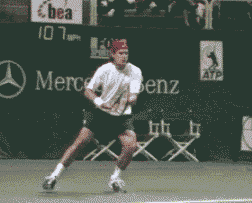
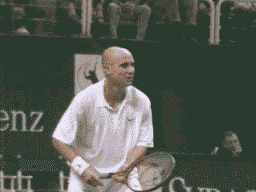
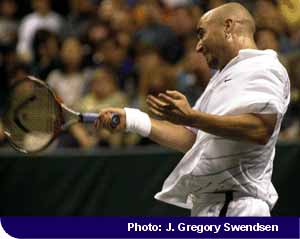

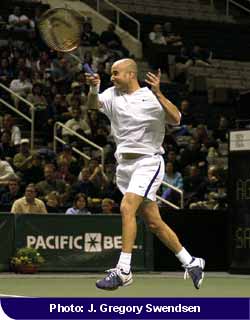
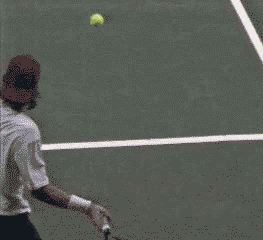
 Visual
Tennis
Visual
Tennis